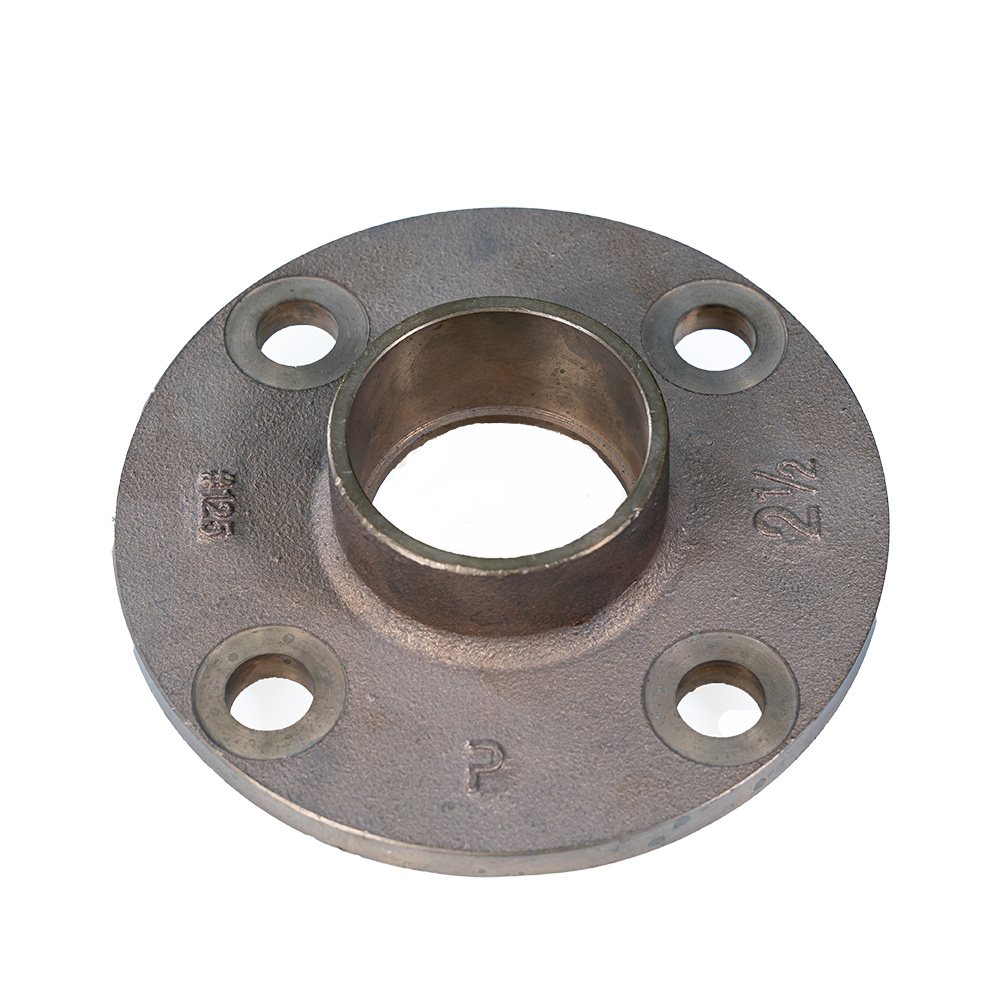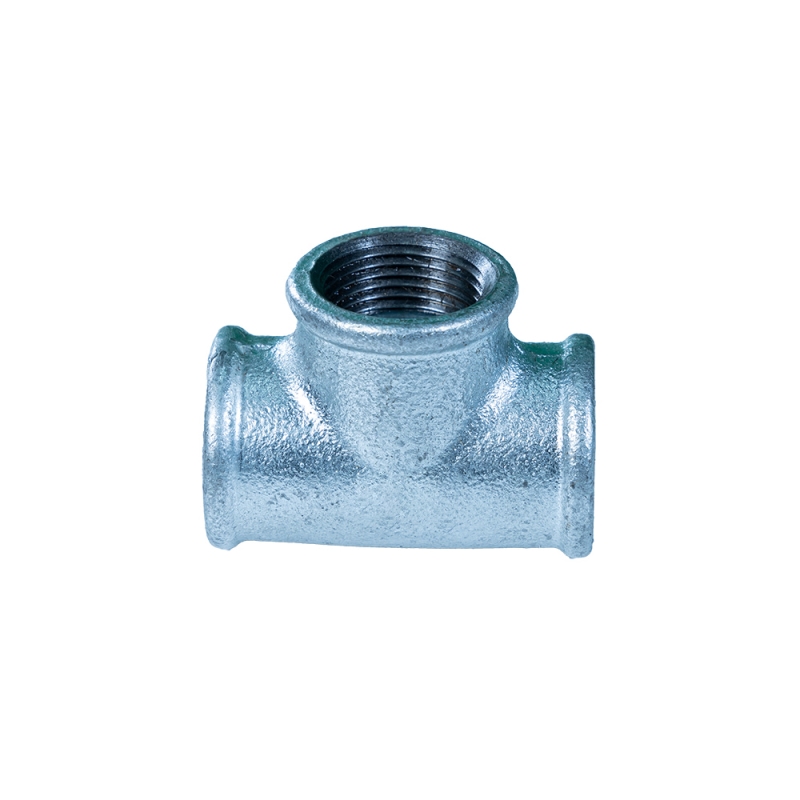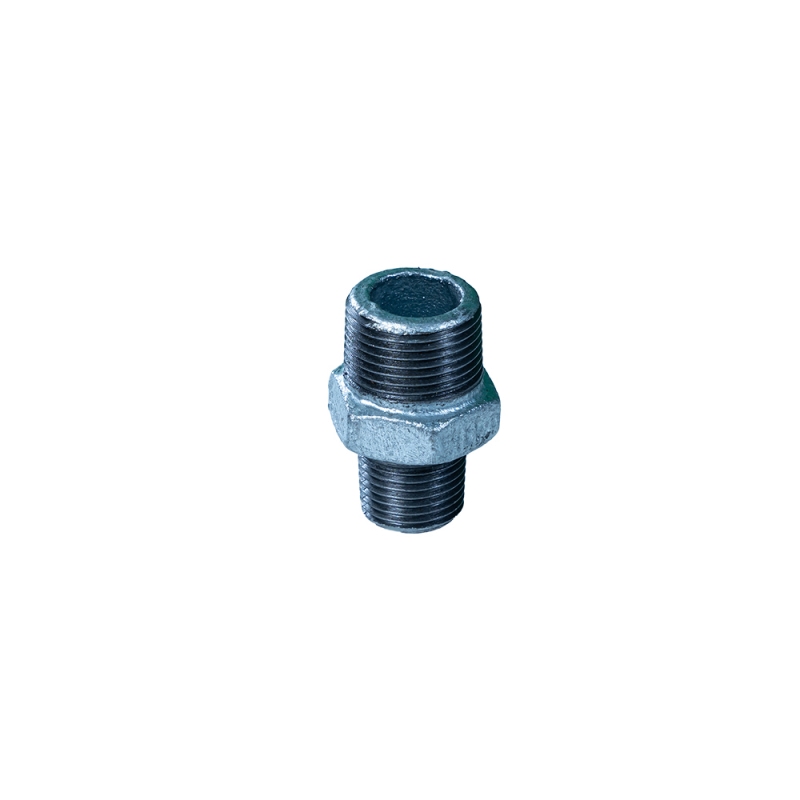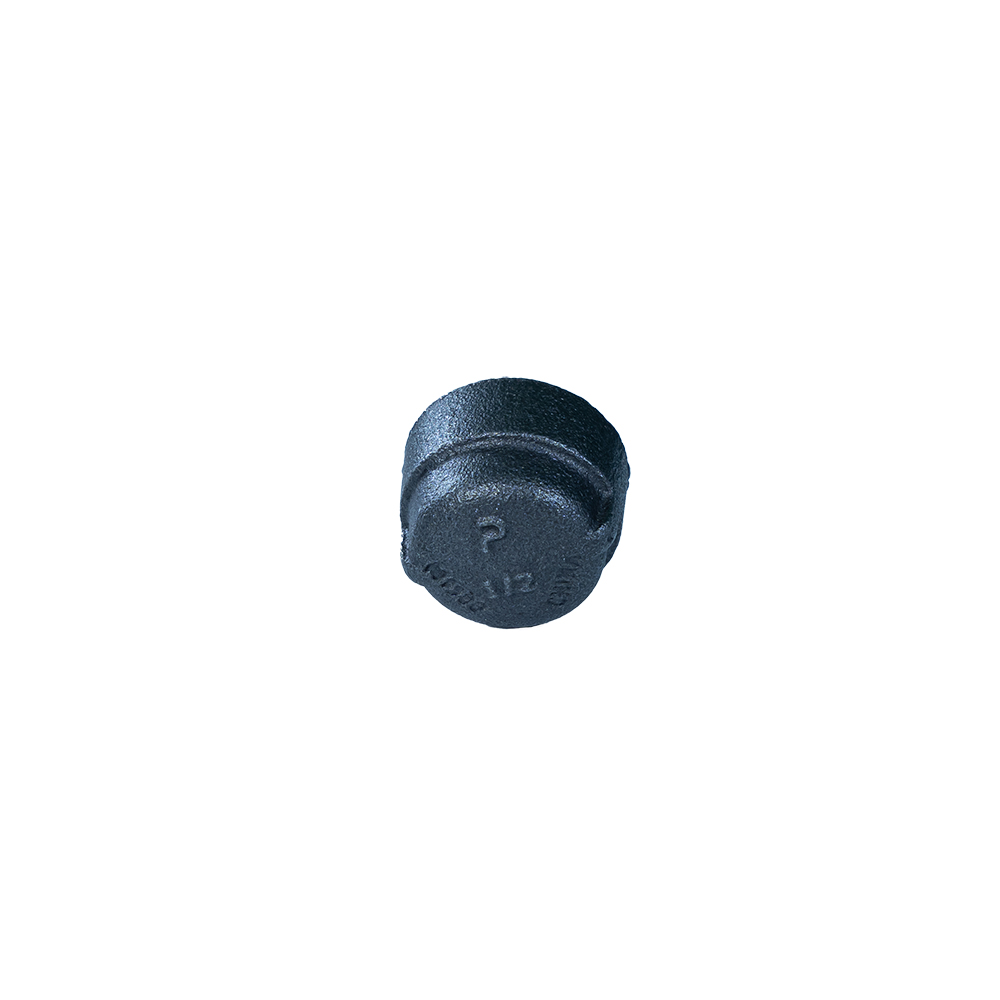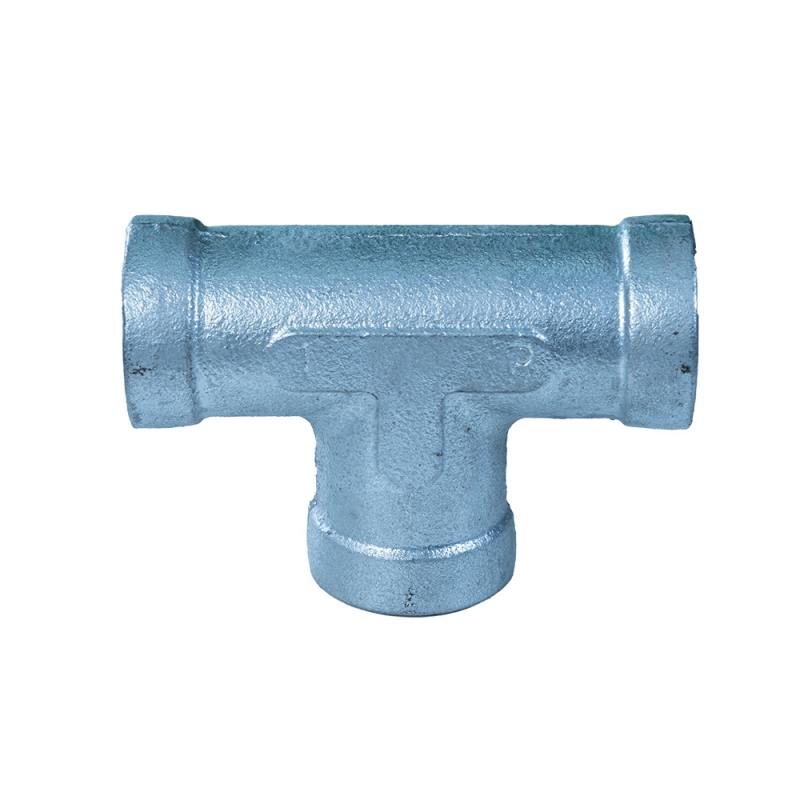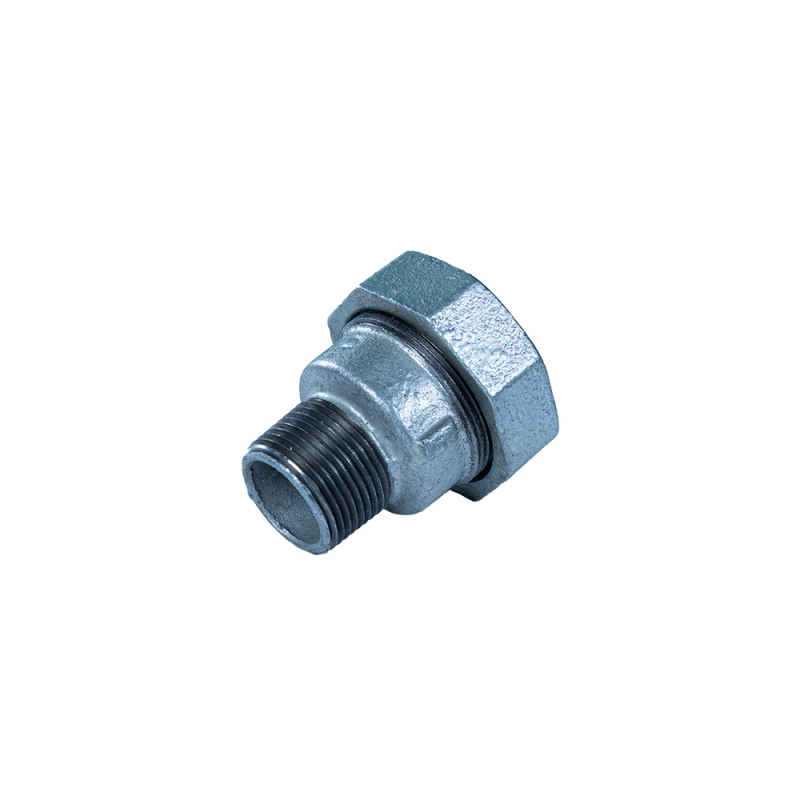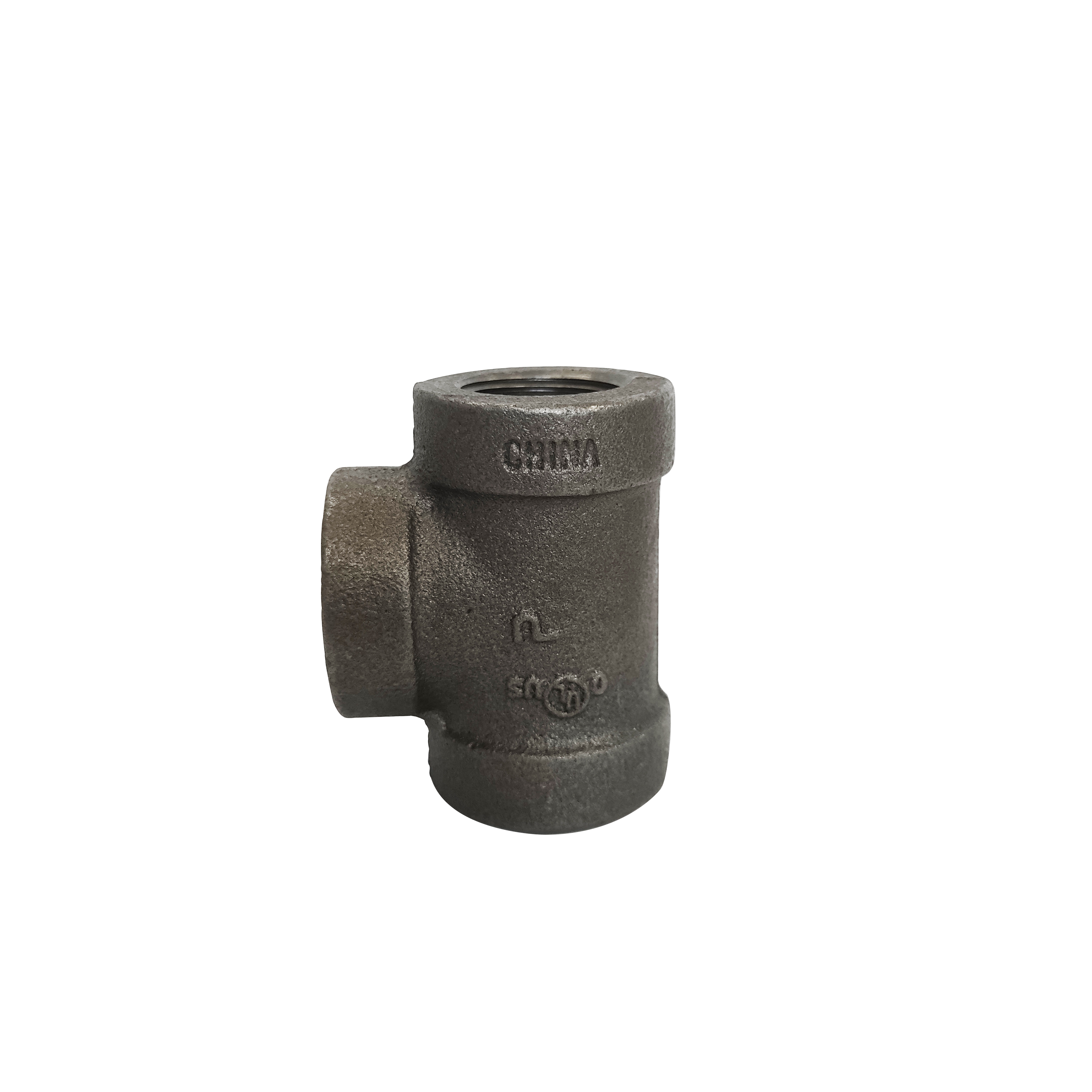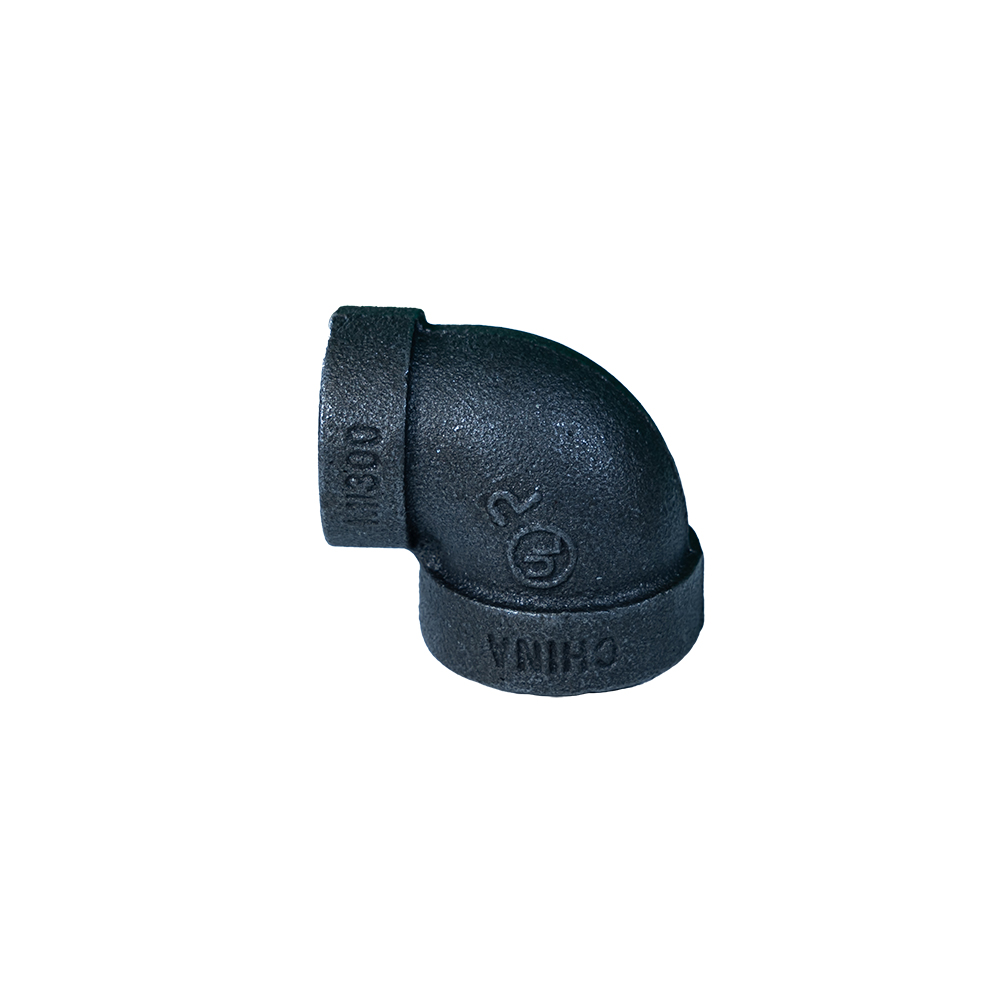Introduction to Ward Malleable Iron Fittings: Foundation of Robust Piping Systems
In the realm of industrial fluid conveyance, the integrity and reliability of piping systems are paramount. At the core of many critical infrastructures are robust components designed to withstand rigorous conditions. Among these, ward malleable iron fittings stand out as a cornerstone for durable and resilient pipe connections. These specialized fittings are engineered to offer superior strength, ductility, and resistance to shock and corrosion, making them indispensable across a wide array of demanding applications. From complex petrochemical installations to vast municipal water distribution networks, their consistent performance ensures long-term operational efficiency and safety.
This comprehensive guide delves deep into the world of malleable iron fittings, exploring their intrinsic properties, the intricate manufacturing processes that define their quality, and their expansive utility in modern industrial landscapes. We will uncover the technological advancements, adherence to stringent international standards, and the compelling advantages that position these fittings as a preferred choice for B2B decision-makers and technical professionals. Our focus extends to specific product examples like the Union with Brass Seat Threading Fitting, illustrating how precision engineering meets real-world demands. Through data-driven insights, technical specifications, and a commitment to quality, we aim to provide an authoritative resource on these vital components.
Deconstructing Malleable Iron: Material Science and Core Properties
Malleable iron is a unique class of cast iron renowned for its ductility and toughness, properties not typically associated with other forms of cast iron. It is produced by subjecting white cast iron to a specialized heat treatment process known as annealing. This process transforms the brittle cementite (iron carbide) into tempered graphite nodules, which are responsible for the material's enhanced ductility and resistance to shock.
Chemical Composition and Microstructure:
- Carbon (C): Typically 2.0-2.6%. During annealing, carbon transforms from cementite to graphite, forming temper carbon nodules.
- Silicon (Si): 1.0-1.6%. Promotes graphite formation and fluidity during casting.
- Manganese (Mn): 0.3-0.5%. Counteracts the effect of sulfur and contributes to strength.
- Sulfur (S): Low levels (0.06-0.10%) are crucial. Higher sulfur can lead to brittleness.
- Phosphorus (P): Max 0.15%. Excess phosphorus can reduce impact strength.
The resulting microstructure consists of a ferritic matrix with evenly dispersed, irregularly shaped graphite nodules (temper carbon). This unique configuration allows the material to absorb significant energy before fracturing, making ward malleable iron fittings exceptionally resistant to impact and vibration, unlike brittle gray cast iron.
Why Malleable Iron for Fittings?
- Superior Ductility: Allows the fittings to deform slightly under stress rather than fracturing, enhancing safety in dynamic environments.
- Excellent Tensile Strength: Offers robust mechanical properties, ensuring long-term structural integrity under pressure.
- Shock and Vibration Resistance: Crucial for applications with hydraulic hammer, seismic activity, or heavy machinery vibration.
- Good Machinability: Facilitates precise threading and finishing, ensuring leak-proof connections.
- Corrosion Resistance: When galvanized, these fittings offer significant protection against rust and corrosive media, extending their operational lifespan.
Different types of ward malleable iron fittings include elbows, tees (e.g., black iron reducing tee for changing pipe diameters), unions (such as the black iron union and black iron union fitting, critical for easy system disassembly and maintenance without rotating pipes), reducers, caps, and couplings. Each type serves a specific function in complex piping layouts, ensuring adaptability and versatility across diverse industrial requirements.
The Advanced Manufacturing Process of Ward Malleable Iron Fittings
The production of high-quality ward malleable iron fittings is a meticulously controlled multi-stage process, demanding precision at every turn. It begins with raw material selection and culminates in rigorous quality assurance. This process ensures the fittings meet stringent performance criteria for various industrial applications.
1. Raw Material Preparation and Melting:
- High-grade steel scrap, pig iron, and metallurgical coke are precisely measured according to a specific chemical composition.
- These raw materials are melted in electric induction furnaces, allowing for precise temperature control and alloying element additions to create white cast iron. The molten metal is sampled and analyzed spectrographically to ensure the exact chemical composition required for subsequent malleablization.
2. Casting (Foundry Process):
Most ward malleable iron fittings are produced via sand casting. Highly refractory sand molds are created using advanced pattern-making techniques. The molten white cast iron is carefully poured into these molds, ensuring complete filling and minimal defects. Rapid solidification in the mold promotes the formation of cementite (Fe3C), which is crucial for the malleablization process.
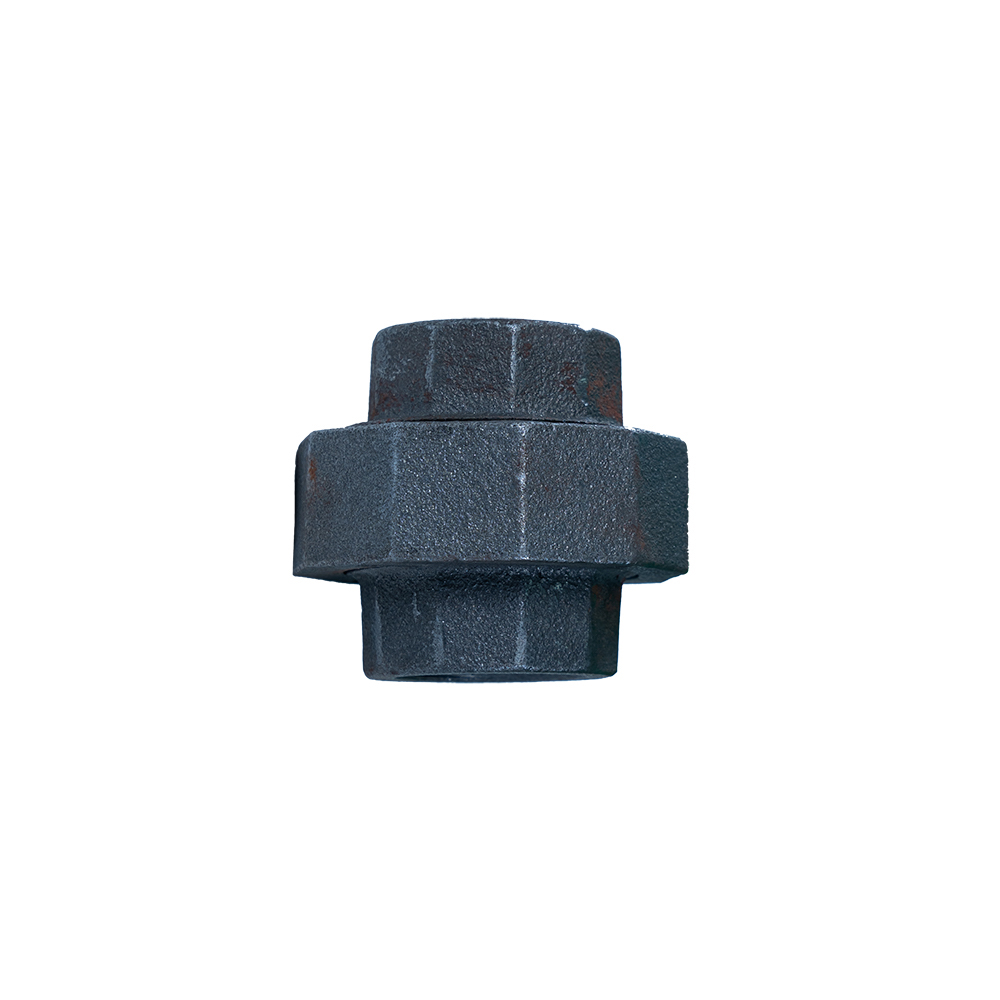
3. Annealing (Malleablization):
This is the most critical step, transforming brittle white cast iron into ductile malleable iron. Castings are loaded into annealing ovens and subjected to a precisely controlled heat treatment cycle:
- First Stage (Graphitization): Heating to high temperatures (around 900-970°C or 1650-1780°F) for several hours. At this temperature, cementite decomposes into austenite and temper carbon (graphite nodules). This process promotes ductility.
- Second Stage (Cooling): Slow cooling through the critical temperature range (around 740-760°C or 1360-1400°F). This allows the remaining austenite to transform into ferrite, resulting in the final ferritic microstructure with distributed graphite nodules.
The entire annealing cycle can take from 24 to 48 hours, depending on the casting size and composition, ensuring optimal material properties and structural integrity for the finished ward malleable iron fittings.
4. Machining and Threading:
- After annealing, the fittings undergo precision machining, often using CNC (Computer Numerical Control) equipment, to achieve exact dimensions and smooth finishes.
- High-speed threading machines cut precise pipe threads (e.g., NPT, BSPT) ensuring secure and leak-proof connections. For products like the Union with Brass Seat Threading Fitting, the brass seat component is also machined to exact tolerances and then integrated.
5. Surface Treatment (Galvanizing/Black Coating):
- Hot-Dip Galvanizing: For enhanced corrosion resistance, fittings are often hot-dip galvanized. This involves immersing the fittings in a bath of molten zinc, creating a durable metallurgical bond that provides cathodic and barrier protection. This is crucial for applications exposed to moisture or corrosive environments.
- Black Oxide Coating: For indoor or less corrosive environments, a black oxide coating may be applied, offering a degree of protection and a distinct aesthetic (e.g., black iron union).
6. Inspection and Quality Control:
Throughout the manufacturing process, rigorous inspection and testing are conducted to ensure compliance with international standards such as ISO (International Organization for Standardization), ANSI (American National Standards Institute), and other relevant industry specifications (e.g., ASTM, UL, FM). Key tests include:
- Chemical Analysis: Verifying material composition.
- Tensile Strength Testing: Measuring the material's ability to withstand stretching forces.
- Hardness Testing: Assessing resistance to indentation.
- Hydrostatic Pressure Testing: Subjecting each fitting to high internal pressure to check for leaks and structural integrity. This is particularly vital for products like welding malleable iron pipe fittings and threaded unions.
- Dimensional Accuracy: Ensuring precise fit and compatibility.
- Visual Inspection: Checking for surface defects, burrs, or incomplete galvanization.
This comprehensive manufacturing and quality assurance protocol ensures that every ward malleable iron fitting delivered meets the highest standards of performance, reliability, and longevity, often achieving an impressive service life of 50 years or more in typical applications.
Key Technical Parameters and Standards Compliance
The performance and compatibility of ward malleable iron fittings are defined by a set of critical technical parameters and adherence to internationally recognized standards. Understanding these specifications is essential for engineers and procurement specialists to ensure optimal system design and operational safety.
Typical Specifications for Ward Malleable Iron Fittings:
| Parameter | Value/Description |
|---|---|
| Material Standard | ASTM A197/A197M (Standard Specification for Cupola Malleable Iron) or equivalent EN 1562 (Malleable Cast Irons). |
| Thread Standard | ANSI B1.20.1 (NPT - National Pipe Taper) for North America; ISO 7/1 (BSPT - British Standard Pipe Taper) or ISO 228/1 (BSPP - British Standard Pipe Parallel) for international markets. |
| Working Pressure | Typically 150 PSI (10.3 bar) for steam, water, oil, and gas at ambient temperatures. Some heavy-duty fittings can exceed 300 PSI. |
| Test Pressure (Hydrostatic) | 300 PSI (20.7 bar) to 500 PSI (34.5 bar) for internal pressure testing, depending on rating. |
| Temperature Range | -20°C to 232°C (-4°F to 450°F) for general applications. Derating applies at higher temperatures. |
| Tensile Strength | Minimum 340 MPa (49,000 psi) for malleable iron itself. |
| Yield Strength | Minimum 220 MPa (32,000 psi). |
| Elongation | Minimum 10% (for ASTM A197), indicating high ductility. |
| Surface Finish | Black (self-color, oiled) or Hot-Dip Galvanized. |
| Applicable Industries | Petrochemical, Oil & Gas, Water Treatment, HVAC, Fire Protection, Industrial Plumbing, Mining. |
These parameters underscore the robust nature of ward malleable iron fittings, confirming their suitability for high-pressure and high-temperature environments where safety and reliability are critical. Compliance with these standards guarantees interchangeability and performance consistency across various manufacturers and systems.
Versatile Applications Across Core Industries
The exceptional strength, ductility, and resistance to shock and corrosion of ward malleable iron fittings make them ideal for a broad spectrum of industrial applications. Their adaptability ensures reliable performance in critical infrastructure projects globally.
Petrochemical and Oil & Gas Industry:
- High-Pressure Lines: Essential for transporting crude oil, natural gas, and refined products under high pressure and varying temperatures.
- Corrosive Environments: Galvanized fittings offer crucial protection against external corrosion from saltwater, chemicals, and atmospheric conditions, enhancing the lifespan of pipelines in refineries and offshore platforms.
- Vibration Resistance: Their ability to absorb shock is vital in systems experiencing vibrations from pumps, compressors, and flow surges.
Water Treatment and Municipal Infrastructure:
- Potable Water Distribution: Used in municipal water supply and drainage systems for their durability and long service life. Galvanized fittings prevent rust contamination.
- Wastewater Management: Withstand the harsh conditions of sewage treatment plants, ensuring reliable flow and preventing leaks.
- Agricultural Irrigation: Robust connections for large-scale irrigation systems, ensuring efficient water delivery over vast areas.
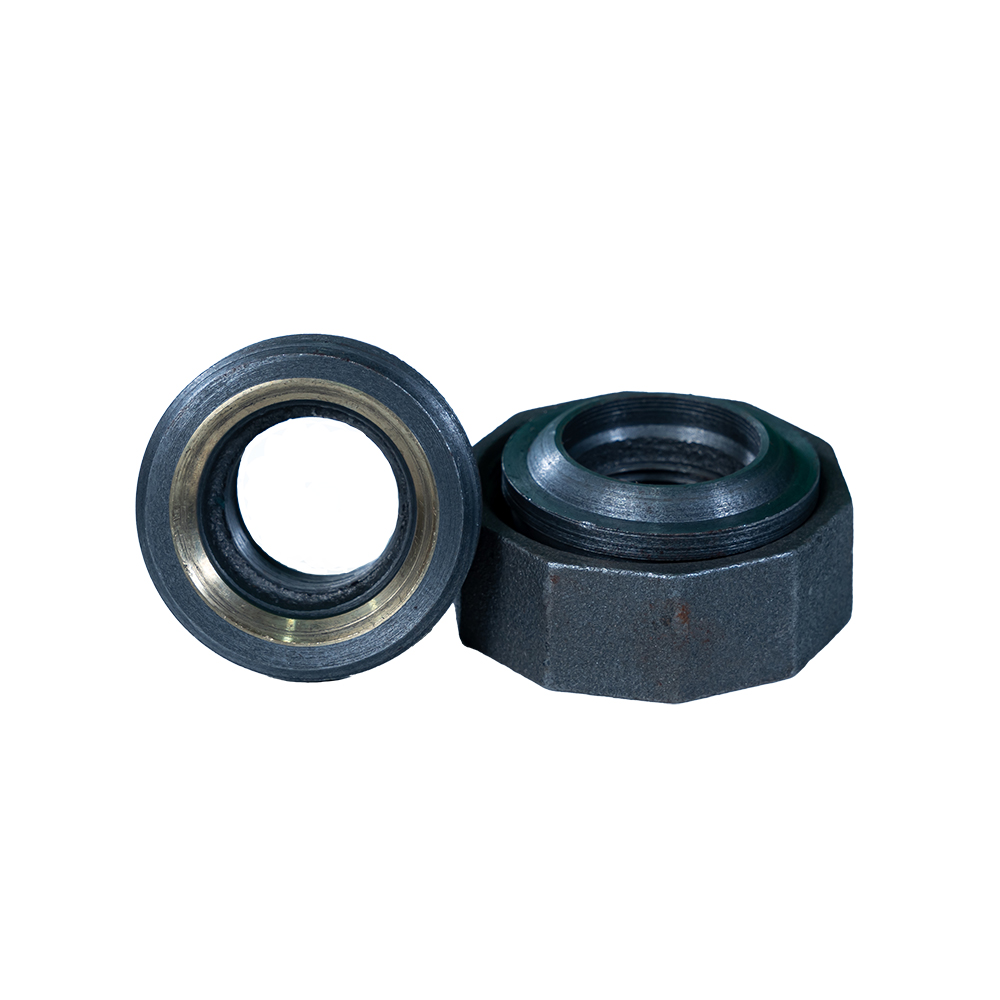
HVAC and Fire Protection Systems:
- Heating and Cooling Loops: Durable connections for hot water and chilled water lines in large commercial and industrial HVAC systems.
- Fire Sprinkler Systems: Ward malleable iron fittings are extensively used in fire protection due to their reliability under pressure and resistance to heat and mechanical stress, crucial for life safety systems. Many fittings carry UL and FM approvals for this specific application.
General Industrial Plumbing and Manufacturing:
- Compressed Air Systems: Secure, leak-proof connections are vital for efficient and safe operation of pneumatic tools and machinery.
- Steam Lines: Able to withstand the high temperatures and pressures of industrial steam distribution.
- Industrial Process Piping: Used in various manufacturing processes for conveying liquids, gases, and slurries where robust and long-lasting connections are required. The Union with Brass Seat Threading Fitting is a prime example, offering reliable, disassemble-friendly connections essential for maintenance in these complex systems.
Mining and Heavy Industry:
- Slurry and Waste Lines: Their abrasion resistance and durability are beneficial in handling abrasive slurries and waste in mining operations.
- Structural Applications: Beyond fluid conveyance, their mechanical properties make them suitable for certain structural components or supports in heavy industrial environments.
In all these scenarios, the inherent advantages of ward malleable iron fittings — their robustness, longevity, and resistance to environmental stressors — translate directly into enhanced system integrity, reduced maintenance costs, and improved operational safety. For instance, in a large-scale water distribution project, the long service life (often exceeding 50 years) and minimal leakage of galvanized fittings contribute significantly to energy savings by reducing pump load and preventing water loss. Their superior anti-corrosion properties, especially when galvanized, ensure sustained performance in aggressive underground or exposed conditions.
Technical Advantages and Performance Benchmarks
The selection of piping components is a critical decision that directly impacts the safety, efficiency, and longevity of any industrial system. Ward malleable iron fittings offer a compelling suite of technical advantages that position them as a superior choice compared to other common materials.
1. Unrivaled Ductility and Shock Resistance:
Unlike brittle cast iron, malleable iron's unique microstructure allows it to absorb significant impact and vibration without fracturing. This "forgiving" nature is crucial in environments subject to hydraulic shock, seismic activity, or mechanical stress from heavy machinery. This resilience minimizes the risk of catastrophic failures, providing a higher safety factor in critical applications.
2. High Tensile Strength and Pressure Rating:
With tensile strengths typically exceeding 340 MPa, ward malleable iron fittings comfortably handle standard industrial pressures (e.g., 150 PSI for steam, water, oil, gas) and often much higher for specialized applications. This robust mechanical strength ensures system integrity under demanding operational conditions, preventing leaks and bursts.
3. Superior Corrosion Resistance (Galvanized):
Hot-dip galvanized malleable iron fittings provide an exceptional barrier against rust and various corrosive agents. The zinc coating offers both physical protection and cathodic protection, sacrificing itself to protect the underlying iron. This significantly extends the service life in outdoor, underground, or chemically aggressive environments, making them ideal for long-term installations.
4. Precision Threading and Leak-Proof Connections:
The machinability of malleable iron allows for the creation of extremely precise and consistent pipe threads. This precision is fundamental for achieving tight, leak-proof connections, minimizing fluid loss, and ensuring system efficiency. For instance, the Union with Brass Seat Threading Fitting incorporates a brass ring for an even more reliable, non-corrosive seal, enhancing overall system integrity and reducing potential environmental hazards.
5. Cost-Effectiveness and Longevity:
While initial material costs might be higher than some plastic alternatives, the exceptional longevity (often 50+ years), minimal maintenance requirements, and inherent durability of ward malleable iron fittings translate into significantly lower total lifecycle costs. Reduced downtime for repairs and replacements contributes to considerable operational savings over decades.
Performance Comparison: Malleable Iron vs. Other Materials
| Feature | Malleable Iron | PVC/CPVC | Carbon Steel |
|---|---|---|---|
| Ductility / Shock Resistance | Excellent (highly resistant to impact & vibration) | Low (brittle at low temps, susceptible to impact) | Good (can be brittle if non-ductile) |
| Tensile Strength | High (e.g., 49,000 PSI) | Low (e.g., 6,000 PSI) | Very High (e.g., 60,000 PSI) |
| Temperature Range | Wide (-20°C to 232°C) | Limited (0°C to 95°C) | Very Wide (-29°C to 425°C+) |
| Corrosion Resistance | Excellent (when galvanized) | Good (to many chemicals) | Poor (rusts easily without coating) |
| Installation Ease | Moderate (threaded connections) | Easy (solvent cement/push-fit) | Moderate (welding/flanging) |
| Cost (Lifecycle) | Low (due to longevity) | Low (initially) | Medium to High |
This comparison highlights that while other materials have their niches, ward malleable iron fittings strike an optimal balance of strength, ductility, corrosion resistance (when galvanized), and cost-effectiveness for a vast range of industrial fluid handling applications, especially where robust mechanical properties and longevity are prioritized.
Selecting the Right Partner: Manufacturer Comparison and Custom Solutions
Choosing a manufacturer for ward malleable iron fittings is a strategic decision that directly impacts project success, operational reliability, and long-term cost efficiency. A discerning approach involves evaluating more than just price; it requires a thorough assessment of the manufacturer's capabilities, quality assurance, and customer-centric approach.
Key Criteria for Manufacturer Selection:
| Criterion | Why it Matters for Ward Malleable Iron Fittings |
|---|---|
| Experience & Track Record | Years in business, successful project portfolio, and reputation for consistent quality. A manufacturer with 20+ years of experience typically possesses deep metallurgical knowledge and process control expertise. |
| Certifications & Compliance | ISO 9001 (Quality Management), CE, UL, FM approvals. These ensure products meet specific safety, performance, and international trade standards. For fire protection systems, UL/FM listings are non-negotiable. |
| Manufacturing Technology | Advanced casting techniques, precision CNC machining, automated threading, and state-of-the-art annealing furnaces. These technologies directly impact dimensional accuracy, thread quality, and metallurgical properties. |
| Quality Control Protocols | Robust internal QC from raw material inspection to final product testing (spectrographic analysis, tensile tests, hydrostatic tests, dimensional checks). Look for transparent reporting and traceability. |
| R&D and Innovation | Commitment to continuous improvement, material science advancements, and new product development (e.g., improved coating technologies, specialized fittings like the Union with Brass Seat Threading Fitting). |
| Logistics & Delivery Capabilities | Ability to manage complex international shipments, reliable lead times, and efficient supply chain management to avoid project delays. |
| Customer Support & After-Sales | Responsiveness, technical assistance, warranty support, and clear return/replacement policies. This builds long-term trust and mitigates risks. |
Customized Solutions: Beyond Standard Products
While standard ward malleable iron fittings meet most requirements, complex industrial projects often demand bespoke solutions. A reputable manufacturer should offer custom fabrication capabilities to address unique challenges:
- Specialized Dimensions: Producing fittings with non-standard lengths, angles, or offsets for specific spatial constraints.
- Unique Threading: Custom thread types or sizes for compatibility with legacy systems or specialized equipment.
- Enhanced Coatings: Applying specialized coatings beyond standard galvanization for extreme corrosive environments or high temperatures.
- Hybrid Designs: Combining features, such as a black iron reducing tee with a specific pressure rating and a unique connection point for a pressure gauge.
- Material Variations: While the core is malleable iron, certain components or inserts (like the brass seat in a union) might require specific materials to meet performance needs.
Partnering with a manufacturer capable of delivering custom solutions ensures that even the most complex piping challenges can be met with engineered precision, optimizing system performance and integration. This collaborative approach often involves detailed CAD/CAM design, rapid prototyping, and extensive testing to validate custom components before mass production.
Real-World Application Cases and Success Stories
The theoretical advantages of ward malleable iron fittings are best illustrated through their successful deployment in challenging real-world scenarios. These case studies underscore their reliability, durability, and cost-effectiveness in critical infrastructure projects.
Case Study 1: Municipal Water Distribution Network Upgrade
- Challenge: An aging municipal water network in a major city faced significant leakage rates (up to 20% of treated water lost) due to corroded and failing connections, leading to immense water loss and high energy costs for pumping. Repairs were frequent and disruptive.
- Solution: The city opted for a comprehensive upgrade, replacing deteriorated sections with galvanized ward malleable iron fittings and pipes. The superior corrosion resistance of the galvanized fittings, coupled with their robust threading, ensured highly secure and leak-proof joints.
- Outcome: Within two years, the leakage rate dropped by over 15%, resulting in millions of dollars in water savings and a measurable reduction in energy consumption for water pumps. The projected lifespan of the new system is over 70 years, drastically reducing future maintenance and replacement costs. The ductility of the fittings also allowed them to better withstand ground shifts and traffic vibrations.
Case Study 2: Petrochemical Plant Expansion - High-Pressure Steam Lines
- Challenge: A new section of a petrochemical processing plant required high-pressure steam lines (up to 200 PSI, 210°C) where system integrity and quick maintenance were crucial. The environment also presented moderate corrosive elements.
- Solution: Engineers specified welding malleable iron pipe fittings and, notably, a significant number of Union with Brass Seat Threading Fitting for critical points requiring periodic disassembly for inspection or equipment replacement. The brass seat provided an excellent seal against high-temperature steam and resisted corrosion from condensate.
- Outcome: The system achieved optimal operational pressure and temperature stability with zero recorded leaks in the first five years of operation. The ease of maintenance provided by the unions reduced downtime during planned turnarounds by an estimated 30%, significantly impacting production efficiency and safety. The inherent shock resistance of the fittings absorbed hydraulic pulsations from the steam flow, reducing wear and tear on adjacent equipment.
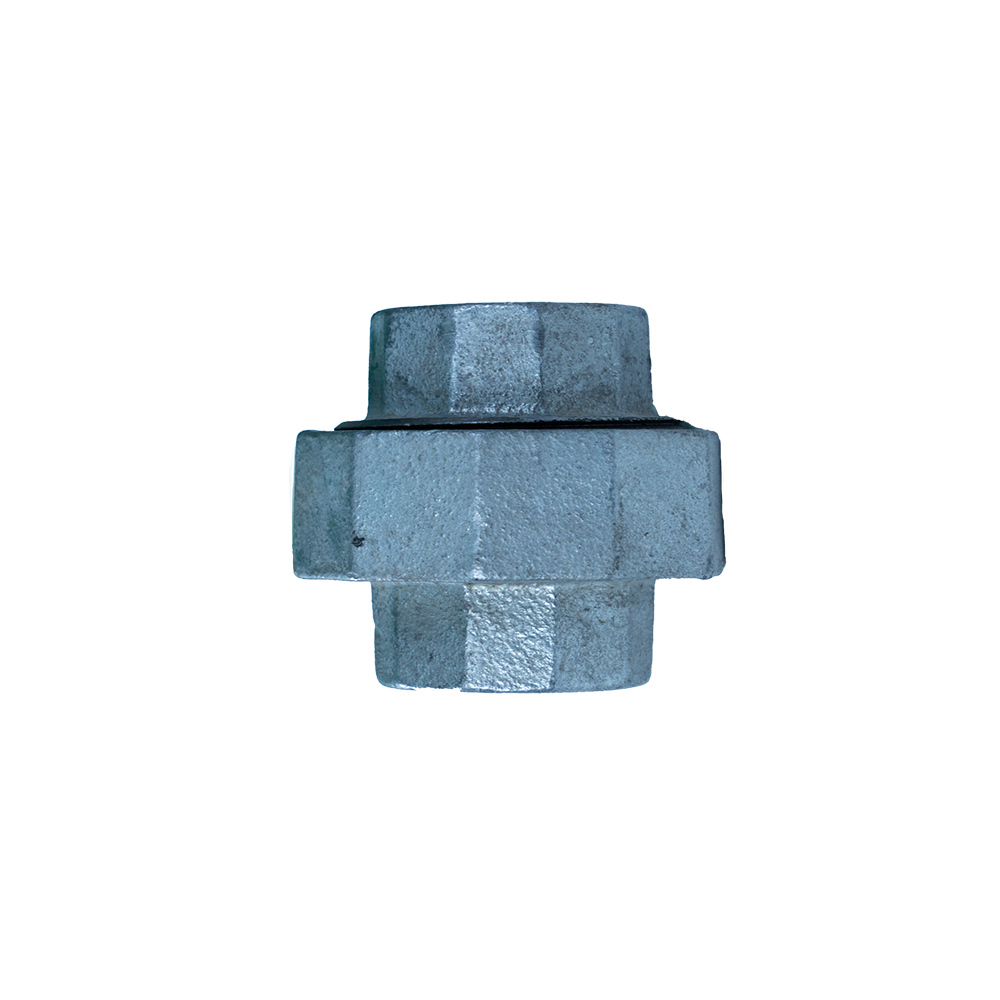
Case Study 3: Fire Protection System in a High-Rise Commercial Building
- Challenge: Installation of a robust and highly reliable fire sprinkler system in a new 50-story commercial skyscraper, requiring compliance with stringent safety codes (UL/FM). The system needed to maintain constant pressure and withstand potential building movement.
- Solution: The contractor exclusively utilized UL and FM approved ward malleable iron fittings (including numerous black iron reducing tee and black iron union fitting for branching and maintenance access) throughout the building's wet-pipe and dry-pipe sprinkler systems. Their inherent ductility provided crucial resistance against potential pipe movement or settlement within the tall structure.
- Outcome: The system passed all pre-commissioning hydrostatic tests with flying colors, demonstrating exceptional leak integrity. The chosen fittings ensured the system's readiness and compliance, offering peace of mind to building occupants and owners. The long-term reliability and minimal maintenance requirements of these fittings are critical for life safety systems, where failure is not an option.
These examples demonstrate that when reliability, longevity, and adherence to performance standards are paramount, ward malleable iron fittings consistently deliver. Their proven track record in diverse and demanding environments reinforces their status as a preferred choice for discerning engineering and construction professionals.
Ensuring Quality and Reliability: Certifications and Testing
For critical infrastructure, the quality and reliability of ward malleable iron fittings are not merely a promise but a verifiable outcome of rigorous adherence to international standards and comprehensive testing protocols. Manufacturers committed to excellence invest heavily in robust quality assurance processes.
Authoritative Certifications:
- ISO 9001: This certification signifies a robust Quality Management System. It ensures that the manufacturer consistently provides products and services that meet customer and regulatory requirements and aims to enhance customer satisfaction through the effective application of the system.
- CE Marking: For products sold within the European Economic Area (EEA), CE marking indicates conformity with health, safety, and environmental protection standards. This is particularly relevant for pressure equipment directives.
- UL Listed (Underwriters Laboratories): A highly respected safety certification, especially crucial for fire protection systems. UL listing for ward malleable iron fittings confirms they meet stringent safety standards for fire resistance and performance under specific conditions.
- FM Approved (Factory Mutual): Similar to UL, FM approval indicates that products, materials, or services have met rigorous loss prevention standards for property and business interruption risks, particularly relevant for industrial and commercial fire protection and industrial plumbing.
- ASTM, ANSI, BS, DIN Standards: Compliance with these specific material and dimensional standards (e.g., ASTM A197 for malleable iron, ANSI B1.20.1 for pipe threads) ensures interchangeability and performance consistency across the global market.
Comprehensive Testing Protocols:
Beyond certifications, continuous in-house and third-party testing validates the integrity of each batch of fittings.
- Spectrographic Chemical Analysis: Ensures the raw material and molten iron consistently meet the precise chemical composition required for high-quality malleable iron, preventing material inconsistencies that could compromise ductility or strength.
- Tensile and Yield Strength Testing: Samples from each production run are tested to ensure they meet or exceed specified mechanical properties (e.g., minimum 340 MPa tensile strength, 10% elongation). This confirms the success of the malleablization process.
- Hardness Testing (Brinell or Rockwell): Verifies the material's resistance to indentation, indicating proper microstructure formation post-annealing.
- Hydrostatic Pressure Testing: Every single fitting undergoes a hydrostatic test at a pressure significantly higher than its rated working pressure (e.g., 300-500 PSI). This critical test guarantees leak-proof integrity and structural soundness under stress.
- Dimensional Inspection: Using precision gauges and optical comparators, critical dimensions, including thread profiles (e.g., for black iron union fitting), pipe seating, and overall size, are meticulously checked against design specifications. This ensures perfect fit and compatibility with standard pipes.
- Coating Thickness and Adhesion Test (for Galvanized Fittings): Verifies the quality and consistency of the zinc coating, ensuring long-term corrosion protection.
- Non-Destructive Testing (NDT): For high-stakes applications, methods like Magnetic Particle Inspection (MPI) or Eddy Current Testing may be employed to detect surface or subsurface flaws without damaging the fitting.
This layered approach to quality assurance, combining authoritative certifications with comprehensive testing, provides unparalleled confidence in the reliability and performance of ward malleable iron fittings, making them a trusted choice for demanding industrial applications globally.
Trust and Partnership: Delivery, Warranty, and Customer Support
Beyond product specifications, a manufacturer's commitment to customer trust and long-term partnership is paramount in the B2B landscape. This includes transparent policies on delivery, robust warranty offerings, and dedicated customer support that ensures seamless project execution and after-sales satisfaction.
Global Delivery and Logistics:
- Efficient Supply Chain: Reputable manufacturers maintain optimized supply chains to ensure consistent material flow and production efficiency, minimizing lead times.
- Global Shipping Expertise: Experience in handling international customs, documentation, and various shipping methods (sea freight, air freight) to ensure timely and cost-effective delivery of ward malleable iron fittings to any global destination.
- Stock Availability: Maintaining adequate stock levels for standard fittings (like common black iron reducing tee or black iron union) allows for rapid dispatch and responsiveness to urgent client needs.
- Typical Delivery Cycles: For standard orders, lead times can range from 2-4 weeks. For large volume or custom orders, a detailed production schedule with agreed-upon milestones is provided.
Warranty and Quality Assurance:
A strong warranty reflects a manufacturer's confidence in their product's quality and durability. For ward malleable iron fittings, a standard warranty typically covers manufacturing defects for a period of 1 to 5 years from the date of purchase or installation. Key aspects include:
- Defect-Free Guarantee: Assurance that fittings are free from material and workmanship defects.
- Performance Guarantee: Confirmation that products will perform according to published specifications (pressure, temperature ratings) under normal operating conditions.
- Replacement or Refund Policy: Clear procedures for addressing verified warranty claims, ensuring efficient replacement of defective products or appropriate financial recourse.
- Extended Lifespan Expectation: While warranties cover defects, the inherent design and manufacturing quality of these fittings mean their operational lifespan often extends well beyond typical warranty periods, sometimes exceeding 50 years with proper installation and maintenance.
Dedicated Customer Support:
Effective customer support is critical for successful long-term partnerships, especially in complex industrial projects.
- Technical Assistance: Access to experienced engineers and technical staff who can provide guidance on product selection, installation best practices, and troubleshooting. This support is invaluable when working with specialized components like the Union with Brass Seat Threading Fitting.
- Responsive Communication: Prompt replies to inquiries, efficient processing of orders, and clear communication regarding order status, shipping, and any potential issues.
- After-Sales Service: Beyond warranty claims, support for long-term maintenance advice, availability of spare parts (where applicable for complex fittings), and continuous product information updates.
- Client Feedback Integration: A commitment to actively seeking and incorporating client feedback to continuously improve product quality and service delivery.
The combination of reliable delivery, comprehensive warranty, and proactive customer support transforms a transactional relationship into a trusted partnership, ensuring project success and peace of mind for B2B clients relying on the critical performance of ward malleable iron fittings.
Frequently Asked Questions (FAQ) about Ward Malleable Iron Fittings
Q1: What is the primary advantage of malleable iron over other types of cast iron for fittings?
A1: The primary advantage is its significantly higher ductility and resistance to shock and impact. Unlike gray or white cast iron, malleable iron undergoes a heat treatment (annealing) that transforms brittle carbon structures into ductile graphite nodules. This makes ward malleable iron fittings less prone to cracking under stress, vibration, or impact, making them ideal for dynamic piping systems.
Q2: Are galvanized malleable iron fittings suitable for potable water systems?
A2: Yes, hot-dip galvanized ward malleable iron fittings are widely used in potable water systems. The zinc coating provides excellent corrosion resistance and meets various health and safety standards for water conveyance, preventing rust and contamination. Always ensure fittings comply with relevant local and international certifications for potable water applications.
Q3: Can malleable iron fittings be welded?
A3: While it is possible to weld malleable iron in specific, controlled environments, it is generally NOT recommended for standard field applications. The heat from welding can reverse the malleablization process, making the iron brittle in the heat-affected zone. For connections requiring welding, it's typically recommended to use specially designed welding malleable iron pipe fittings or to transition to weldable carbon steel components. Threaded connections are the standard and most reliable method for joining malleable iron fittings.
Q4: What is the purpose of a brass seat in a union fitting?
A4: In a product like the Union with Brass Seat Threading Fitting, the brass seat provides a superior, non-corrosive, and more durable sealing surface compared to metal-to-metal contact of iron components. Brass is softer than iron, allowing it to conform better for a tighter, leak-proof seal, especially beneficial in steam, water, or gas lines where thermal expansion and contraction can occur. It also prevents galling (seizing) of the mating surfaces, making assembly and disassembly easier.
Q5: How do I ensure I select the correct thread type for my pipe system?
A5: Pipe threads are critical for leak-proof connections. The two most common types are NPT (National Pipe Taper) for North America and BSPT (British Standard Pipe Taper) or BSPP (British Standard Pipe Parallel) for international markets. It is crucial to match the fitting's thread type to that of the pipe. Mismatching threads can lead to leaks and system failure. Always check product specifications and consult piping standards (e.g., ANSI B1.20.1 for NPT, ISO 7/1 for BSPT) to ensure compatibility.
Q6: What is the typical lifespan of a ward malleable iron fitting?
A6: When properly installed and used within its specified pressure and temperature ranges, especially if galvanized in corrosive environments, ward malleable iron fittings can have an exceptionally long service life, often exceeding 50 to 70 years. Their robust construction and resistance to degradation contribute to their remarkable longevity in diverse industrial applications.
Conclusion: The Enduring Reliability of Ward Malleable Iron Fittings
The extensive analysis of ward malleable iron fittings underscores their critical role as robust and reliable components in industrial piping systems. From their meticulously controlled manufacturing process, which imparts superior ductility and shock resistance, to their adherence to stringent international standards, these fittings are engineered for enduring performance in the most demanding environments. Their versatility across sectors like petrochemicals, water treatment, HVAC, and fire protection speaks volumes about their adaptability and inherent advantages over alternative materials.
The detailed technical parameters, reinforced by compelling application case studies, demonstrate their capacity to reduce operational costs, enhance safety, and ensure long-term system integrity. Products such as the Union with Brass Seat Threading Fitting exemplify the blend of traditional strength with innovative design, providing reliable, maintainable connections crucial for modern industrial demands. For B2B decision-makers and technical specialists, selecting a supplier of ward malleable iron fittings becomes a strategic investment in system longevity and operational efficiency.
By prioritizing manufacturers with proven expertise, comprehensive certifications (ISO, UL, FM), and dedicated customer support, industries can ensure that their piping infrastructure is built on a foundation of trust, quality, and technical excellence. The enduring legacy and continuous advancement of malleable iron technology cement its position as a cornerstone for reliable fluid conveyance systems worldwide.
References
- American Society for Testing and Materials. ASTM A197/A197M: Standard Specification for Cupola Malleable Iron.
- International Organization for Standardization. ISO 7-1: Pipe threads where pressure-tight joints are made on the threads — Part 1: Dimensions, tolerances and designation.
- American National Standards Institute. ANSI B1.20.1: Pipe Threads, General Purpose (Inch).
- G.F. Vander Voort. ASM Handbook, Vol. 9: Metallography and Microstructures, Malleable Iron. ASM International, 2004.
- Sharma, D.K. "Engineering Properties of Cast Iron for Pipe Fittings." Journal of Materials Science and Technology, 2018.
- Underwriters Laboratories Inc. UL 213: Standard for Malleable Iron and Ductile Iron Pipe Fittings.
- Factory Mutual Global. FM Approved Standards for Industrial Pipe Fittings.
Post time: 8月-21-2025


